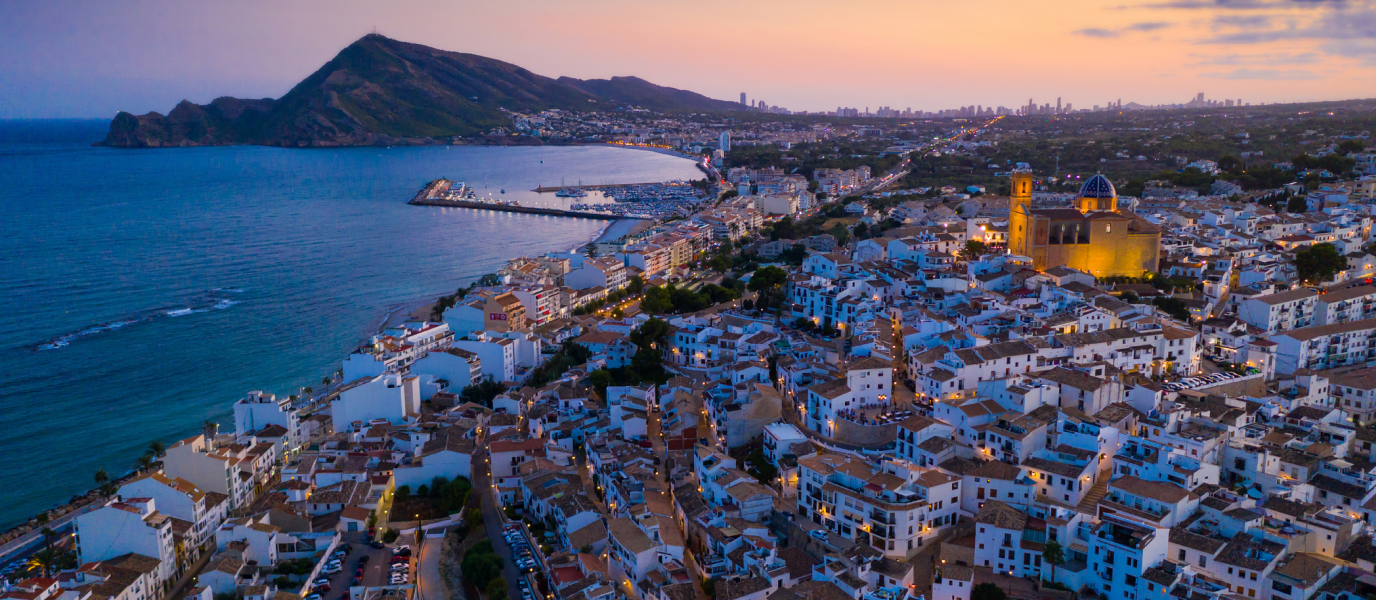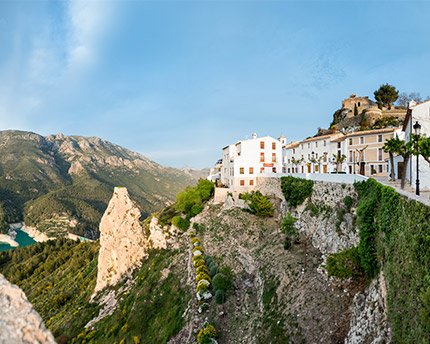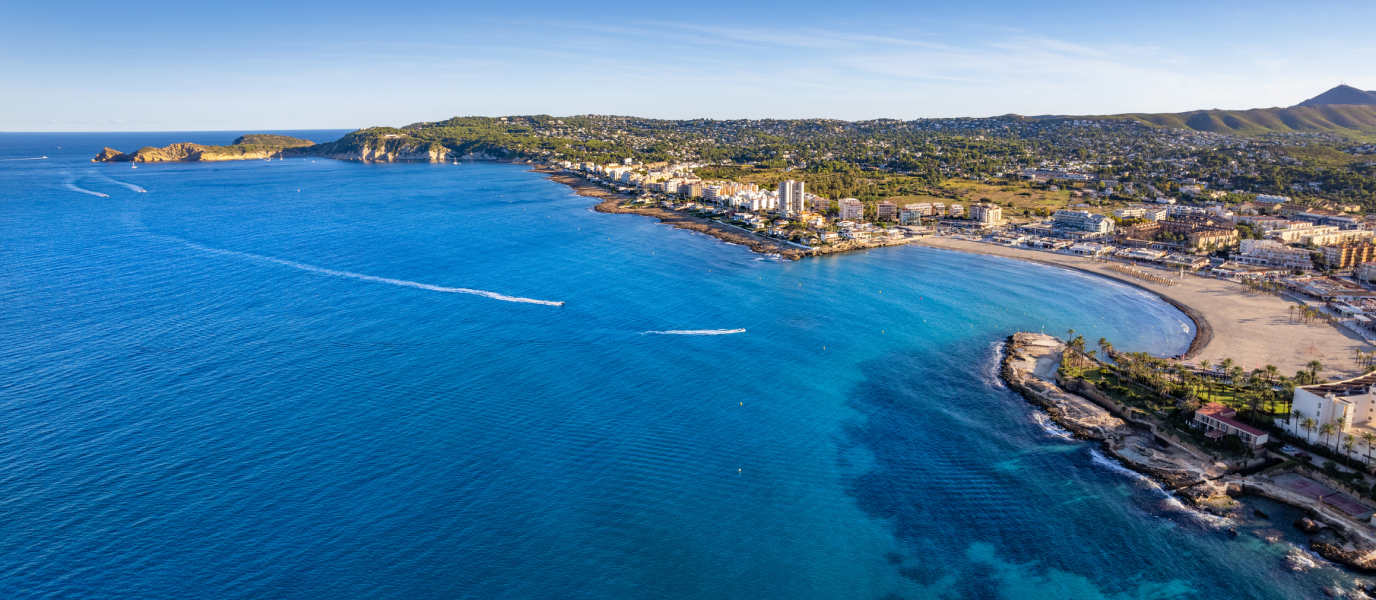The coastal town of Altea, in the province of Alicante, is popularly known as the dome of the Mediterranean. The reason for this nickname comes from the two beautiful blue ceramic domes, belonging to the church of El Consuelo, which preside over the ancient village from the top of a hill. Everything else is a series of whitewashed small houses perched on a slope that drops down, slowly but surely, to the depths of the Mediterranean Sea. Tourists, experts in finding places of genuine beauty, have long since found in Altea a special place to go not just once, but many times over. Perhaps this is why, today, of Altea’s 25,000 inhabitants, 40 per cent are foreign. As if that wasn’t enough, Altea is surrounded by other priceless jewels of the Costa Blanca, such as Calpe or Benissa, both of which also have a rich historical heritage. If you’re wondering what to do or what places to visit in Altea, keep reading and we’ll tell you.
Visiting the old centre of Altea
The beautiful old centre of Altea, known in Valencian as El Fornet, has been able to keep its traditional appearance, despite the relentless tourist activity that has been carried out on the Costa Blanca for decades. Overlooking the Mediterranean Sea, the old town of Altea, a white maze of cobbled streets and winding steps, unfurls naturally on the side of a hill. Within, small details are plentiful, making this corner, which has an authentic Mediterranean essence, stand out: unexpected mosaics, ornate doors, and colourful flowers everywhere. Our advice is to get lost in the streets and be surprised by all that Altea has to offer.
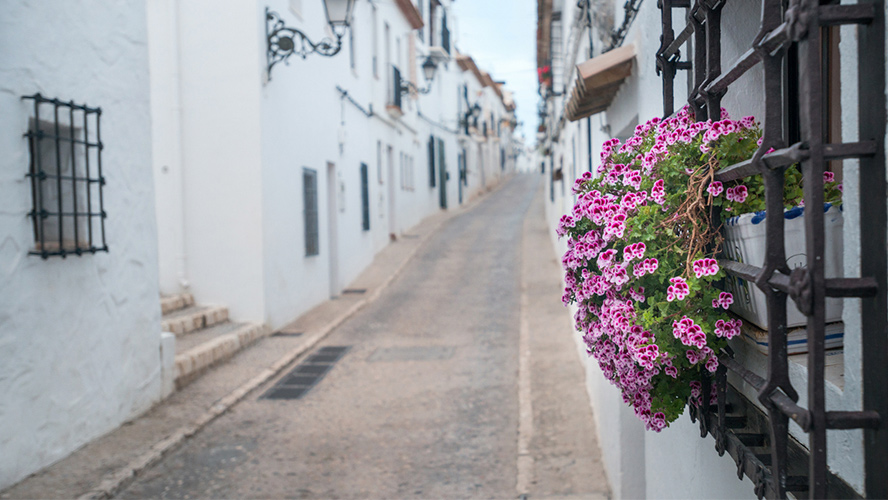
The Church of El Consuelo, Altea’s main symbol
At the top of the hill, located in the plaza de la Iglesia, is the parish of Nuestra Señora del Consuelo, the most important Catholic temple in Altea. Its structure is formed by two large blue ceramic domes, an eternal symbol of the city, is visible from any point, including the promenade and beaches. Its architectural ancestor is a sober temple from the beginning of the 17th century, the remains of which were used in 1901 during the construction of the current building.
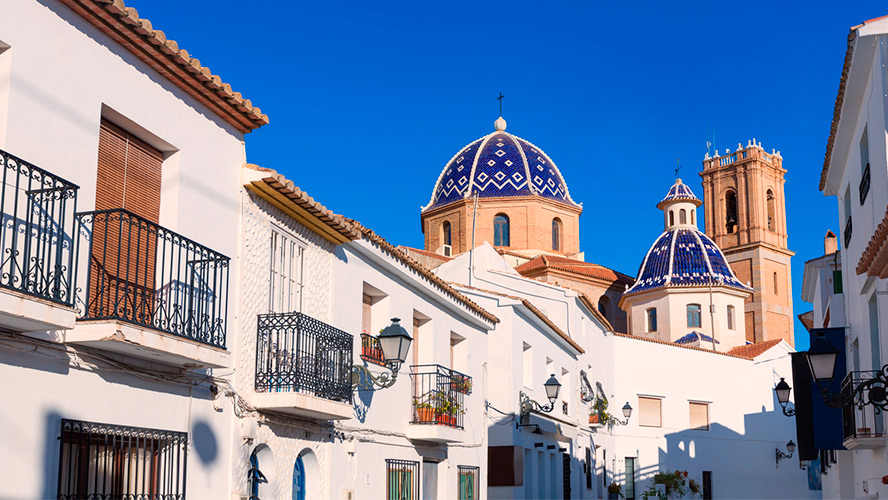
Up to this point in the city, there are two main routes: the so-called Costera del Mestre de la Música, steps that go up the slope between whitewashed houses; or calle Pont de Moncau, which runs through other charming squares, such as the Plaza del Agua or the Plaza de la Cruz. We assure you that either of these two routes to the church of El Consuelo will uncover a variety of bars, pubs and restaurants on every corner.
The most important viewpoint of Altea
If you want to take advantage of your visit to the church of Nuestra Señora del Consuelo, you should know that what is considered the best viewpoint of Altea is just a few metres away. Known as the Cronistas viewpoint, or viewpoint of the Wall, its panoramic view allows us to see not only the city and its port, but also the distant cliffs of Sierra Helada, and on good days, the Rock of Ifach in Benidorm. By the way it is worth mentioning that, together with the viewpoint in Benidorm, the one in Altea has recently been included in a list of the most beautiful viewpoints in Spain. Given the steeply sloping nature of the village, it won’t take much effort for visitors to discover many other charming viewpoints in the area.
A look at the Altea market
Another of the pillars that maintain Altea’s essence is, without a doubt, its market and the bohemian air it gives to the city. Every Tuesday, except for holidays, the weekly market is held, a group of nearly 300 stalls, where the activity starts at 8 am in the morning and ends at 2 pm. Generally speaking, you can find it on two main streets. At the Carrer de la Filarmónica you can find those stands that offer fruit and vegetables from Levantine gardens. Likewise, at the Camí del l’Algar and the plaza del Ayuntamiento you can find the textile side of things, with stalls specialised in selling shoes, bags, purses, hats and even some traditional dress from Seville. In the end, even if we don’t want to buy anything, the Altea market is still a social event not to be missed.
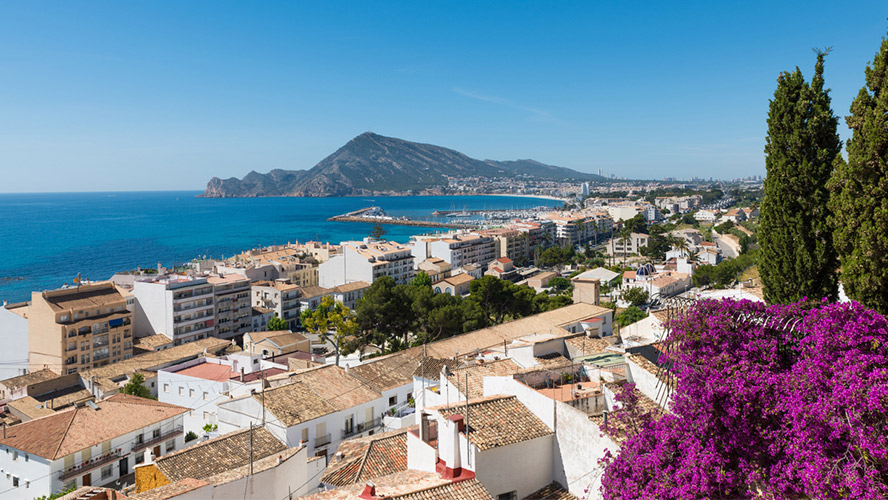
Altea Promenade
A large part of Altea’s seafront is flanked by the promenade, a lovely boulevard that starts at the port and runs parallel to its beaches for about 1 kilometre. Here you will find not only a huge number of restaurants and bars, specialising mainly in rice and seafood, but also several volleyball courts and children’s swings located in the sand. La Roda beach, 1,400 metres long, is the main area for swimming in the town centre. Its blue flag reminds us of the excellent quality of its waters and services. It is also a star attraction for water sport enthusiasts – windsurfing, kayaking, scuba diving, etc. In addition, further north, we find the beach of l’Espigo, a sort of artificial lagoon created in the shelter of the mouth of the Algar River in 2016. Since its waters are always calm, this will most likely be your best option if you have children.
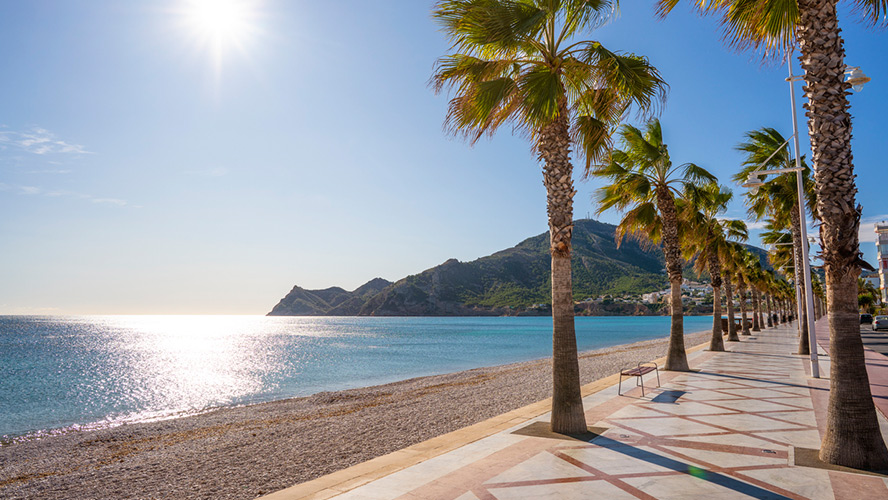
La Olla beach in Altea
And if we continue a little further north, then we reach La Olla beach, where the shore of sand, gravel and stones is about a kilometre in length. In this area on the outskirts, where villas and vegetable gardens are found in abundance, you can rent small boats and surfboards. It is also easy to swim to the two islets that stand out from the sea a few metres further inland – Isleta de l’Olla. Likewise, although the beach is quiet all year round, it is worth knowing that on 10 August, during the San Lorenzo festival, it fills up with people as a result of the fireworks display known as “El Castell de l’Olla”. If you’re in Altea for it, you can’t miss it under any circumstances.
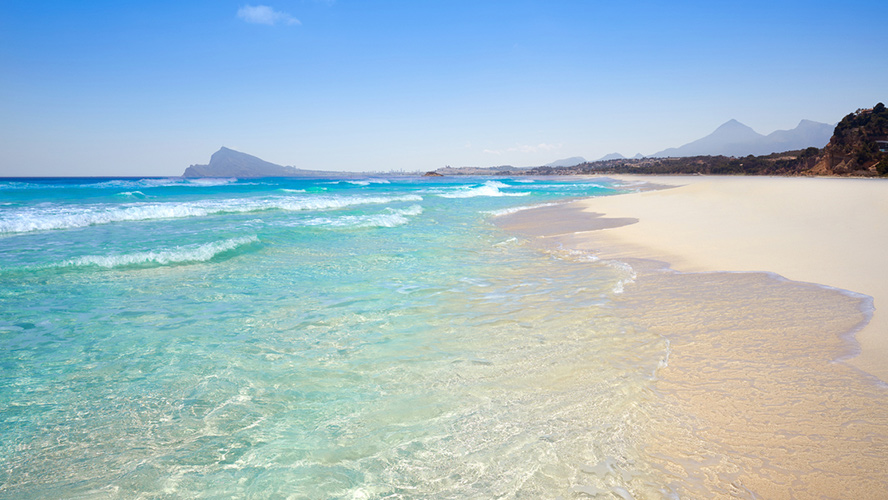
Orthodox Church and other places to visit near Altea
And if you want to visit places beyond Altea, we recommend that you take note of:
-
Temple of Archangel Michael: on the way to Calpe, near the Altea Hills urbanisation, you can visit the first Russian Orthodox Church built in Spain. Due to its curious architecture, inspired by 17th century churches and made exclusively with materials from the Urals, it can easily be seen from the N-332 road.
-
Albir Beach: this pebble beach, located outside the borders of Altea (but very close to it), is especially recommended for snorkelling, due to the wealth fauna and flora, mainly neptune grass, that it hosts on its sea bed. The blue flag that flies on its sands and the somewhat isolated location of the area are proof of this.




































































